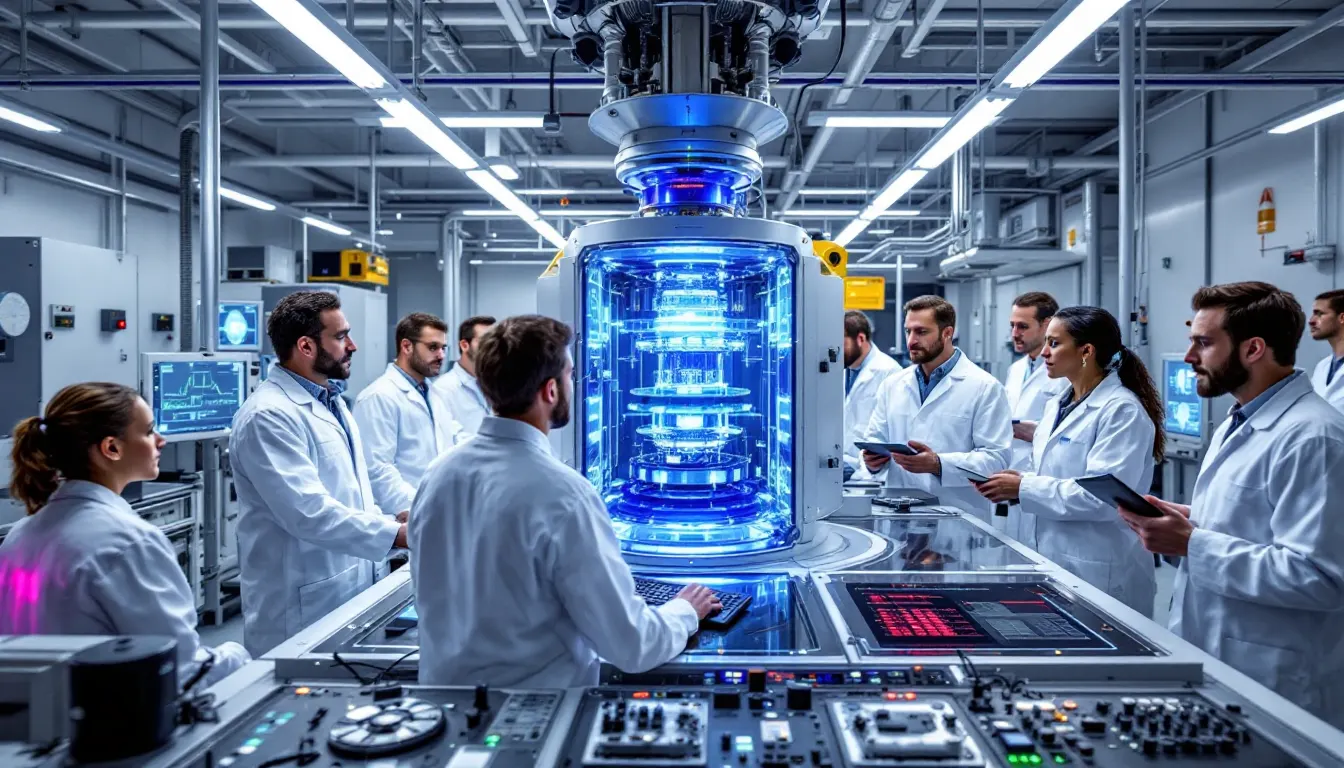How Valor Atomics Achieved Self-Sustaining Nuclear Reaction

Splitting an atom usually requires constant external energy input, making sustained nuclear reactions an industry challenge. Valor Atomics broke this mold by reaching cold criticality, a milestone where a nuclear reaction sustains itself without external power.
This breakthrough happened within the startup’s experimental reactors in 2025, placing the company at the frontier of nuclear innovation. This goes beyond the feat of atom splitting—it's about shifting the operational constraint from energy input to reaction stability.
The leap to cold criticality redefines what nuclear startups can optimize for—systems that amplify power generation with minimal intervention.
Self-sustaining reactions allow compounding energy output without proportional energy input, a fundamental leverage point.
Why Conventional Nuclear Thought Limits Operators
Traditional nuclear startups view atom splitting as an energy battle: input more power, output energy. Valor Atomics upends this by creating a reactor where the reaction feeds itself, reducing energy costs significantly.
This is a classic case of constraint repositioning, not just efficiency. Instead of squeezing more from existing inputs, the startup redefined the reaction’s operational baseline.
Unlike established players focused on massive infrastructure, Valor Atomics engineered systems with inherent feedback loops to sustain reactions. This contrasts with approaches prioritizing energy delivery over reaction autonomy.
Much like how business continuity systems reposition risk from staff to automation, this milestone shifts nuclear power from laborious supervision to systemic leverage.
Mechanisms Behind Valor’s Cold Criticality
The startup’s core innovation lies in reactor design, which balances neutron economy and fuel geometry to maintain criticality at low temperatures. This approach avoids the massive cooling and control systems typical of commercial reactors.
Competitors such as traditional uranium-fueled reactors and fusion ventures chase energy input scaling, but Valor Atomics prioritizes reaction stability with passive controls.
This dropps operational complexity and enables reactors to function longer with less human intervention, reminiscent of business process automation. The system essentially automates a process that previously required active control.
Forward Implications for Energy and Systems Design
Reaching cold criticality flips the investment focus for nuclear projects: from energy input scaling to system design that embeds leverage in physical laws and material choices.
Operators in energy infrastructure should watch Valor Atomics closely. This milestone suggests that future power generation will hinge on **constraint repositioning** toward self-regulating systems.
Geographies with limited traditional power grids can leapfrog legacy obstacles by adopting these low-maintenance, self-sustaining reactors. The mechanism is scalable and requires fewer resources long-term.
Systems that sustain themselves without constant input define the future of energy leverage.
Related Tools & Resources
Achieving operational leverage like Valor Atomics did with their self-sustaining reactors requires precise, repeatable processes that reduce complexity and human error. Tools like Copla, which streamline the creation and management of standard operating procedures, empower teams to automate and document critical workflows. For businesses looking to embed efficiency and consistency into their operations, Copla offers a practical way to capture and scale operational knowledge. Learn more about Copla →
Full Transparency: Some links in this article are affiliate partnerships. If you find value in the tools we recommend and decide to try them, we may earn a commission at no extra cost to you. We only recommend tools that align with the strategic thinking we share here. Think of it as supporting independent business analysis while discovering leverage in your own operations.
Frequently Asked Questions
What does cold criticality mean in nuclear reactions?
Cold criticality refers to the point where a nuclear reaction sustains itself without the need for constant external energy input, allowing the reaction to continue autonomously and reducing operational energy costs.
How does self-sustaining nuclear reaction impact energy costs for operators?
Self-sustaining nuclear reactions significantly lower energy costs by eliminating continuous external power requirements, shifting the focus from energy input scaling to maintaining reaction stability and system design.
What innovations enable reactors to maintain cold criticality?
Cold criticality is achieved through innovations in reactor design that optimize neutron economy and fuel geometry to sustain criticality at low temperatures, avoiding heavy cooling and control systems.
How do self-sustaining reactors compare to traditional nuclear reactors?
Unlike traditional uranium-fueled reactors that rely on constant energy input and massive infrastructure, self-sustaining reactors use inherent feedback loops and passive controls to maintain reactions, reducing complexity and human intervention.
What are the broader implications of cold criticality for energy systems design?
Cold criticality shifts nuclear energy projects from scaling energy input to embedding leverage in system design, enabling scalable, low-maintenance reactors suitable for areas with limited power grids, promoting self-regulating energy solutions.
How does constraint repositioning relate to nuclear reactor efficiency?
Constraint repositioning involves shifting focus from squeezing more energy from inputs to redefining operational baselines; in nuclear reactors, it means designing systems that sustain reactions autonomously rather than demanding ongoing energy input.
What parallels exist between nuclear reaction stability and business process automation?
Both rely on automating processes that previously required active human control; in nuclear systems, passive controls maintain reactions, similar to how automation reduces human intervention in business workflows.
Why should energy infrastructure operators watch innovations like Valor Atomics?
Innovations achieving self-sustaining reactions indicate a future trend toward energy systems that require less supervision and energy input, suggesting a strategic advantage in adopting these scalable, efficient technologies.

